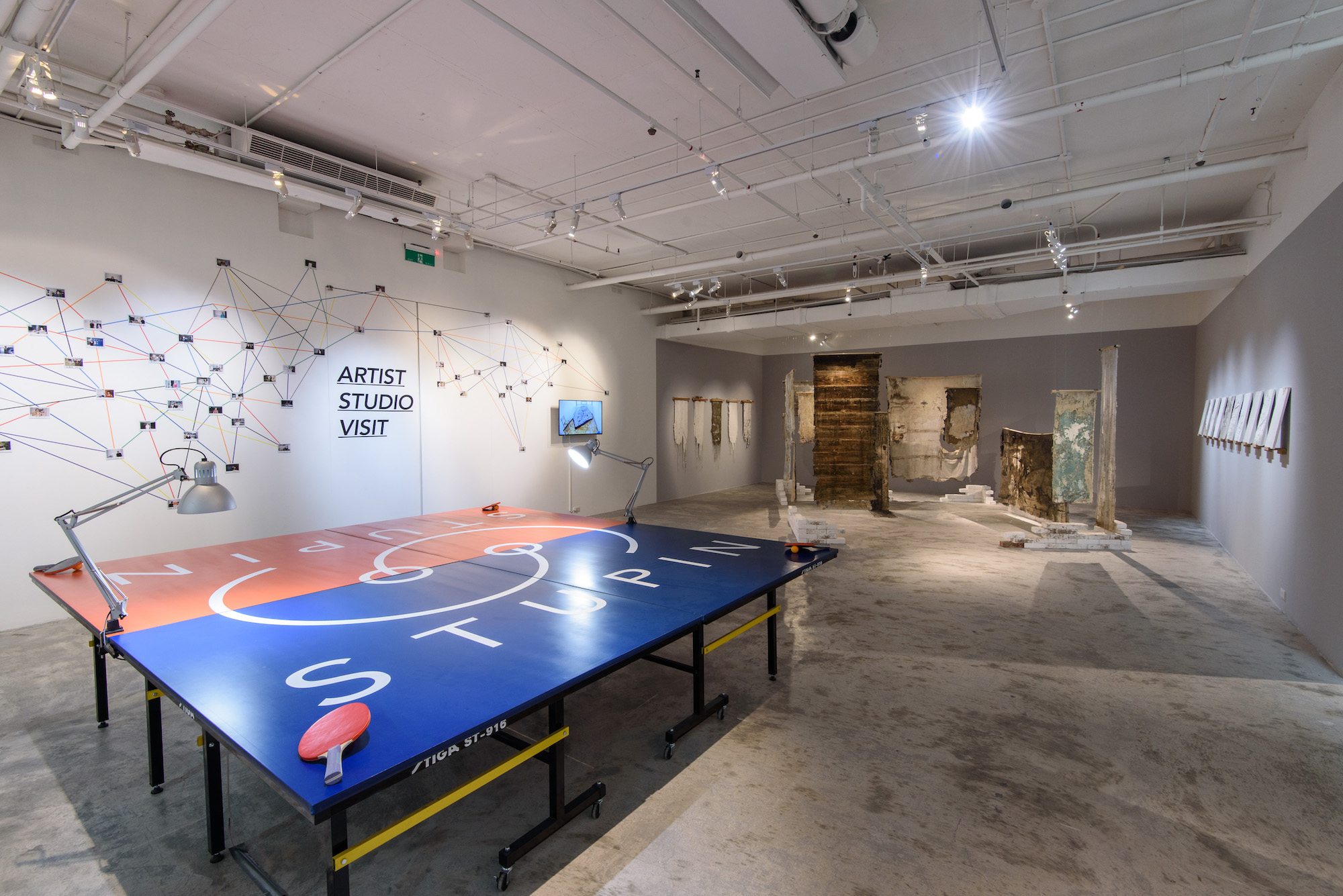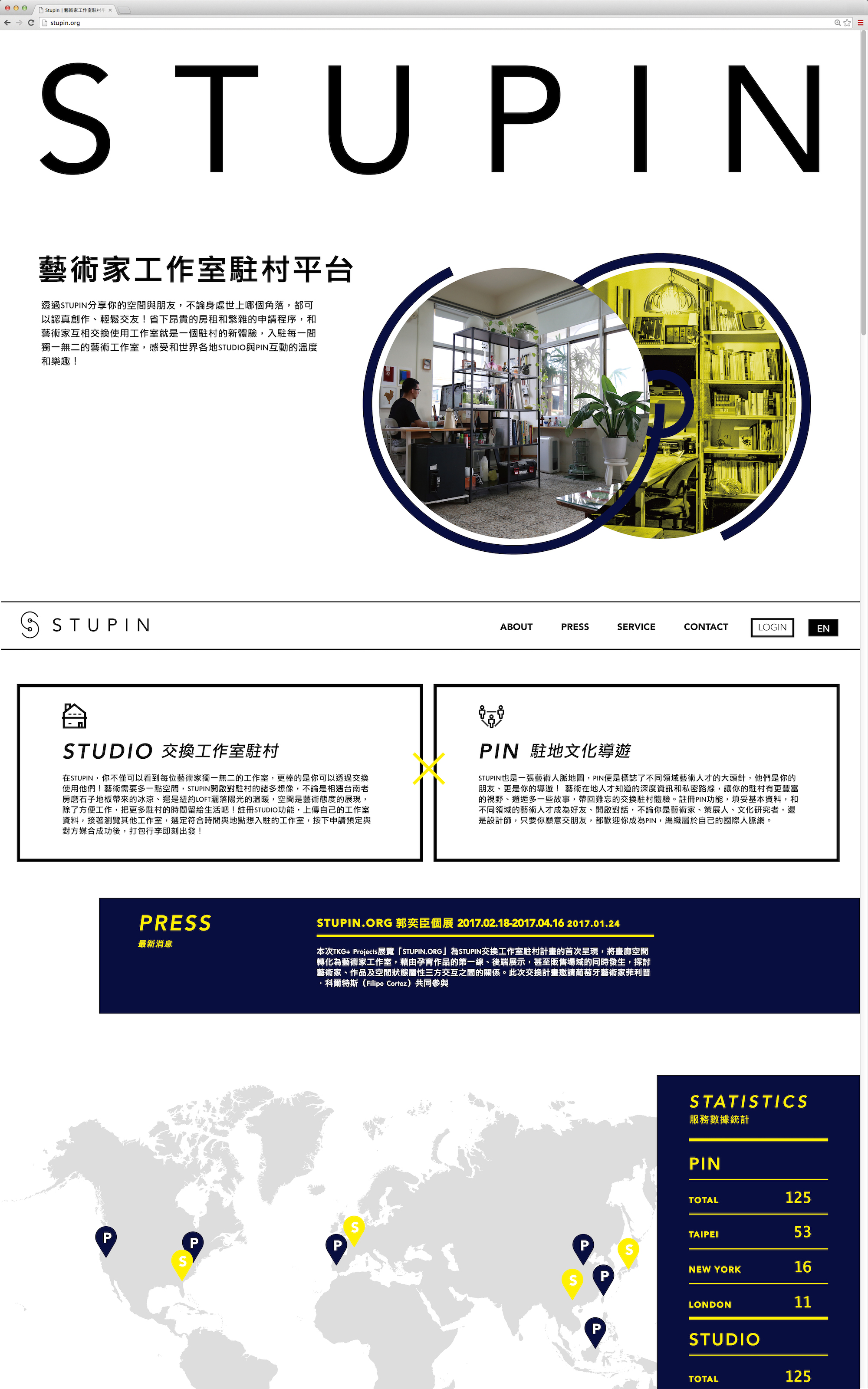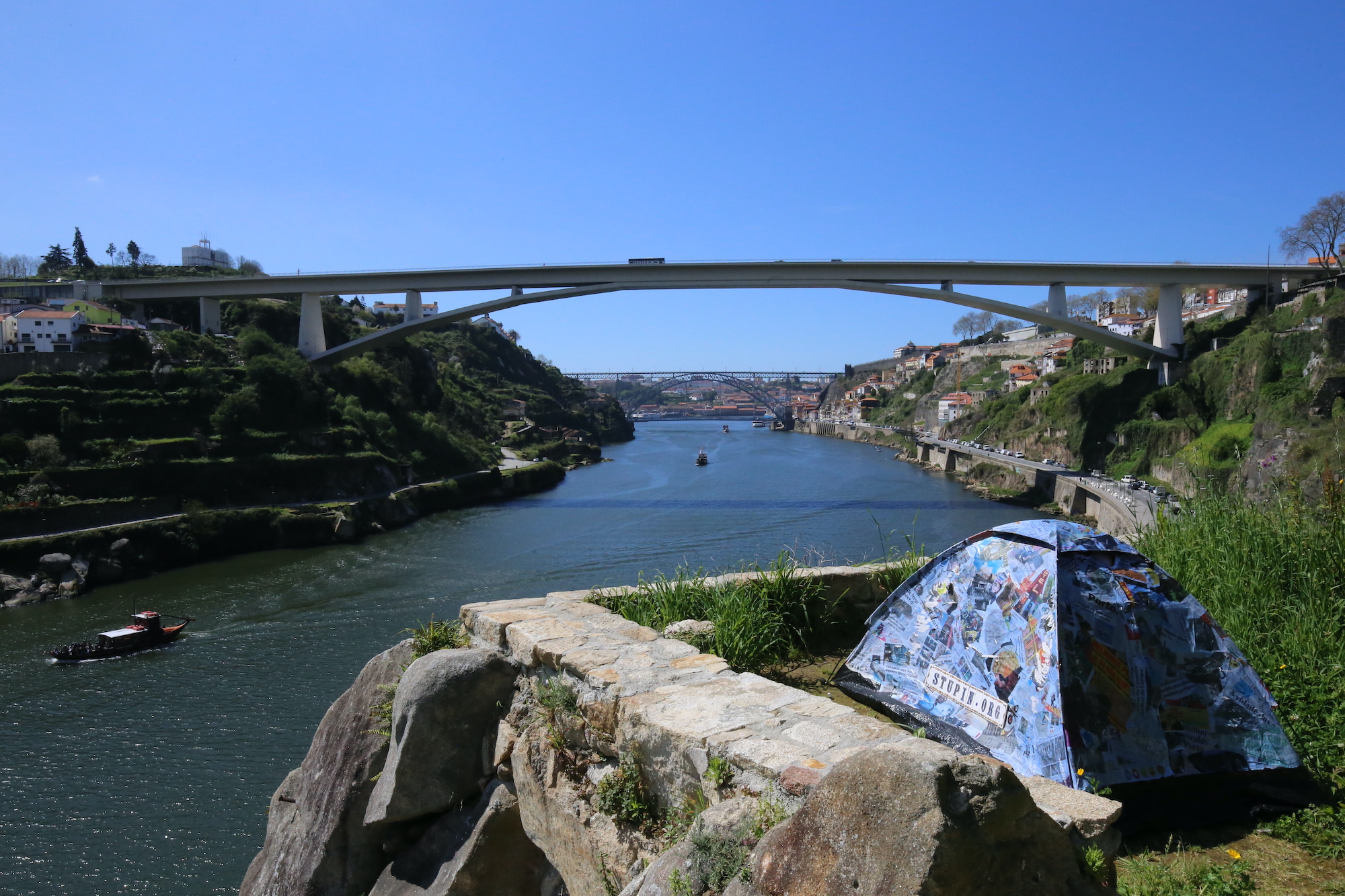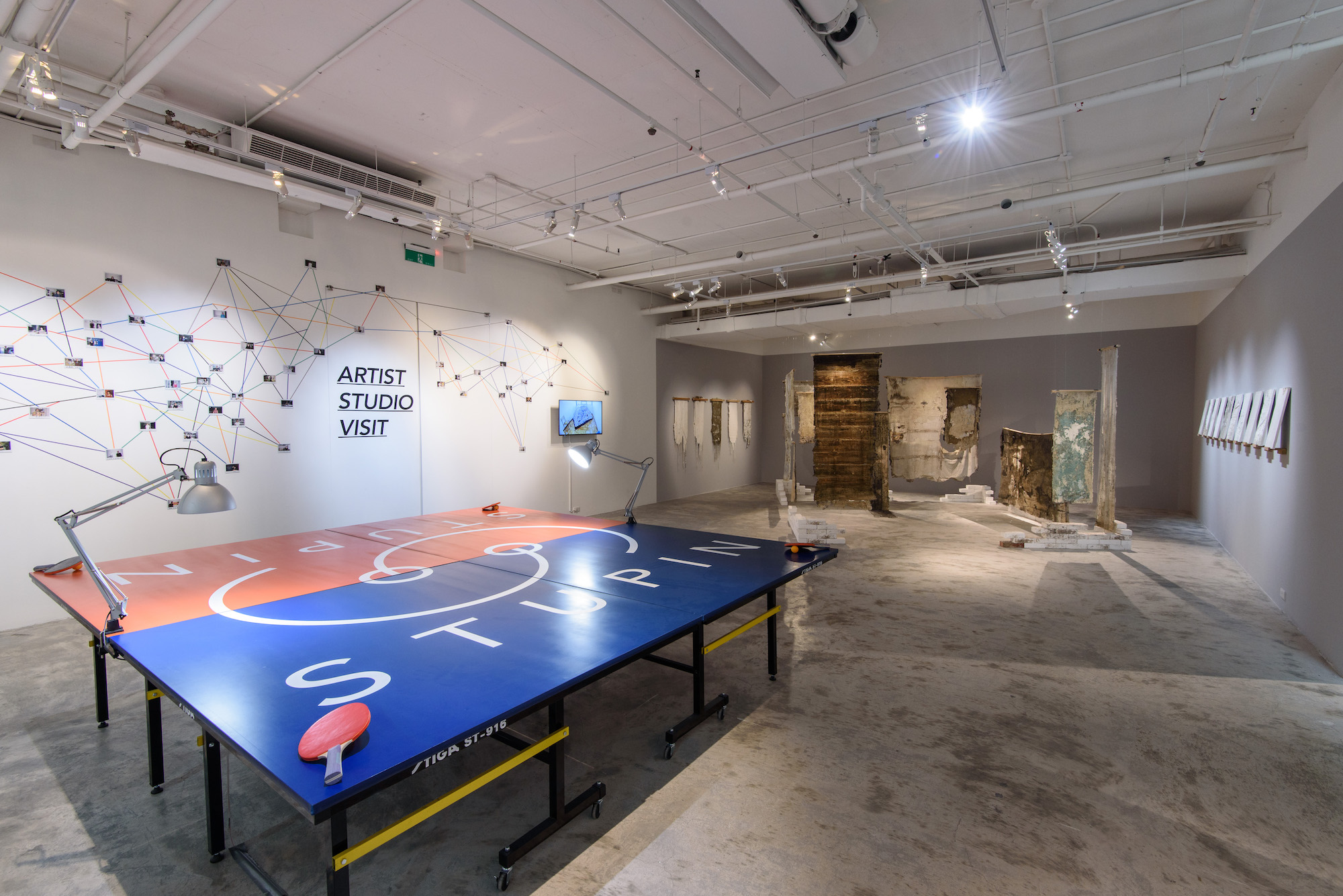STUPIN represents an attitude to explore the unknown without constraints. With an open mind, we invite you to join this journey. Be STUPIN! Be Smart!
Make the Question Become the Solution
STUPIN is an artist studio residency platform where different fields of artists can share and link their studios and connections. Through two main functions – STUDIO1 and PIN2, we expect to build a global studio residency network. The STUPIN pronunciation resembles "stupid"; likewise, the artist tends to devote to their creation bravely and nearly foolishly. But often, this persistence comes out with an unexpected result. Art creation is not just a way to ask the question but a path to solve the problem and enhance art residencies' environment.
STUPIN represented the act that a person explores the boundaries of unknown territory. Unlimited by the framework of logic, the creator would be able to step into the unknown with courage and an open mind.
 STUPIN.ORG in the scene of exhibitions
STUPIN.ORG in the scene of exhibitions
Every City is Your Studio
STUPIN initiated the first studio swapping project in February 2017. Two artists from two totally different parts of the world, one sub-tropical island on the Pacific Ocean- Taipei, Taiwan, and one valley city overlooking the Atlantic Ocean on the European continent – Porto, Portugal, experienced each other lives for the first time. Filipe Cortez was introduced by a friend in 2016. He has been to Residency Unlimited in New York for half a year. However, this was his 1st time visiting Asia. During the two months stay, he visited Tokyo, Hong Kong, and Macaw. Everything was new. Everything was intriguing to him. When I asked him what's the most special thing for him, he laughed and said that he didn't get the chance to speak Portuguese for a long time. Filipe tried to find traces of history in Taipei, but it was not very easy. Finally, he found the material in the affiliated village next to Beimen near the Taipei train station. With latex, silicon, and plaster, he rubbed the shape and texture of the old Taipei, preserving the history and memory of the space.
 The 1st time residency exchange of STUPIN by artists KUO I-chen and Filipe Cortez
The 1st time residency exchange of STUPIN by artists KUO I-chen and Filipe Cortez
Filipe Cortez in the creative process during the residency in Taipei
This was also my first time in Portugal, and this ancient city Portal famous for its wine and beautiful scenery. The marks and traces of history were everywhere to be seen, whether on the street or in cultural heritages. The grand buildings commemorated the greatness of the country in the 16th century. On my way to the studio every day, tile walls and walls intertwined into the most magnificent street view of Portal. With all these new visual perceptions, I started to buy a newspaper from local vendors every day while practicing a little Portuguese. I went back to my studio to collage the images and text on the STUPIN tent, which symbolized the nomad. While at the same time, I tried to find a place to store my residency memories. Completely different from my previous residency experiences, we didn't have an institute to take care of us. We only have each other as a friend. We didn't only swap physical spaces but also spirit spaces. Both of us experienced cultural shock and getting used to different lifestyles at the same time. Also, we tried to see our familiar cities from each other's brand new perspective. The experience of us was like an overlapping film, recording one story of two memories. If the life of the film is to record a passing memory, the overlapping then was to prolong the memory. Maybe the memory would not only be just a memory but overlay a story waiting to be told.
Porto, Portugal
I tried to present the experience by an exhibition by transforming the gallery into an artist studio. Where the artworks made were happening at the same time with exhibiting and even selling. I wanted to discuss the relationships among artists, artworks, and spaces. Filipe Cortez could have access to a gallery, curators, collectors, audiences of all kinds, and also friends. On the other side, Filipe introduced me to many artists and local galleries too. In this way, we shared the connection and created a more profound friendship. Before I left Porto, I went to the restaurant his brother run by the sea and met his parents by chance. We talked about Filipe and this unique experience. Then his mother gave me a big hug as a wish which made me feel the warmth and support of his family. Likewise, when I came back to Taiwan, I brought Filipe back to my hometown Kaohsiung and met my family too. Overall, this residency was not just sharing our spaces, but we walked into each other's lives and enriched each other. We saw the corners in the city we never paid attention to- Taipei / Porto - were not the same cities, but the cities we would see through each other's eyes where we found a different self in the end.
The ruins in Porto, Portugal
On my journey with Porto, I unexpectedly discovered an abandoned factory. It was covered by vegetation of all kinds and turned into a ruined garden. Every plant found the perfect spot and angle to grow. In the sunshine, flowers bloomed. On the damp floor, moss was lush. Bees built their hive in discarded components. The function of the space was not it was anymore. It had found a suitable status after giving away the former one. All these experiences inspired me to found STUPIN. It was not just raising a question to the current system, but also by trying to deconstruct and rebuild to share open resources. I expected it could bring more possibilities for residency. Each artist was a studio, and each person working in the creative field could be a local guide. By sharing, each city would be your studio.
 STUPIN-the art residency exchange platform
STUPIN-the art residency exchange platform
Note 1: STUDIO can only be registered and exchanged when both applicants have their own studio. If the applicants do not have studio, he or she can apply a studio from owner by paying the rent or resources exchanging.
Note 2: PIN can provide a guide for private attractions that only locals know by Stupin members to enhance the experience of art residencies and exchange for the international network.


